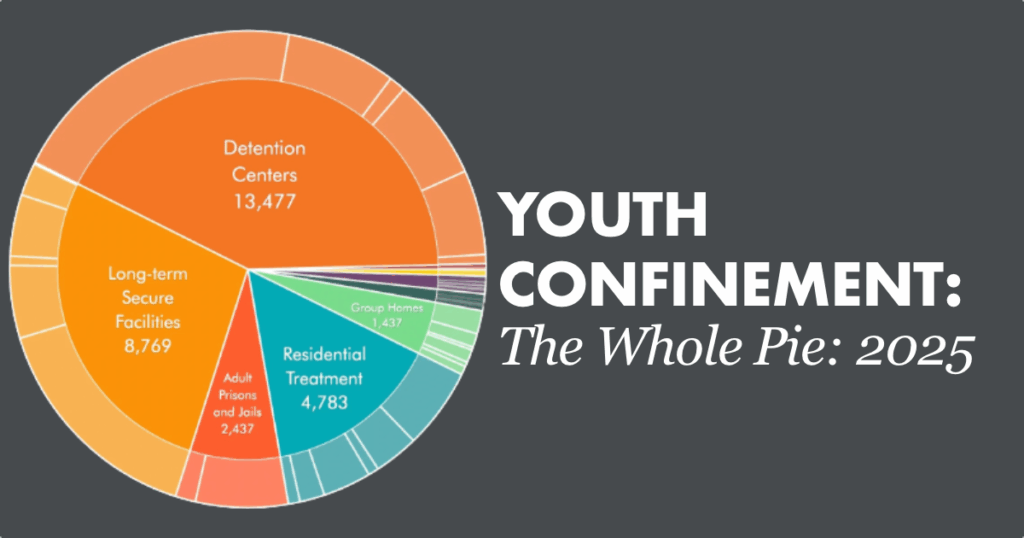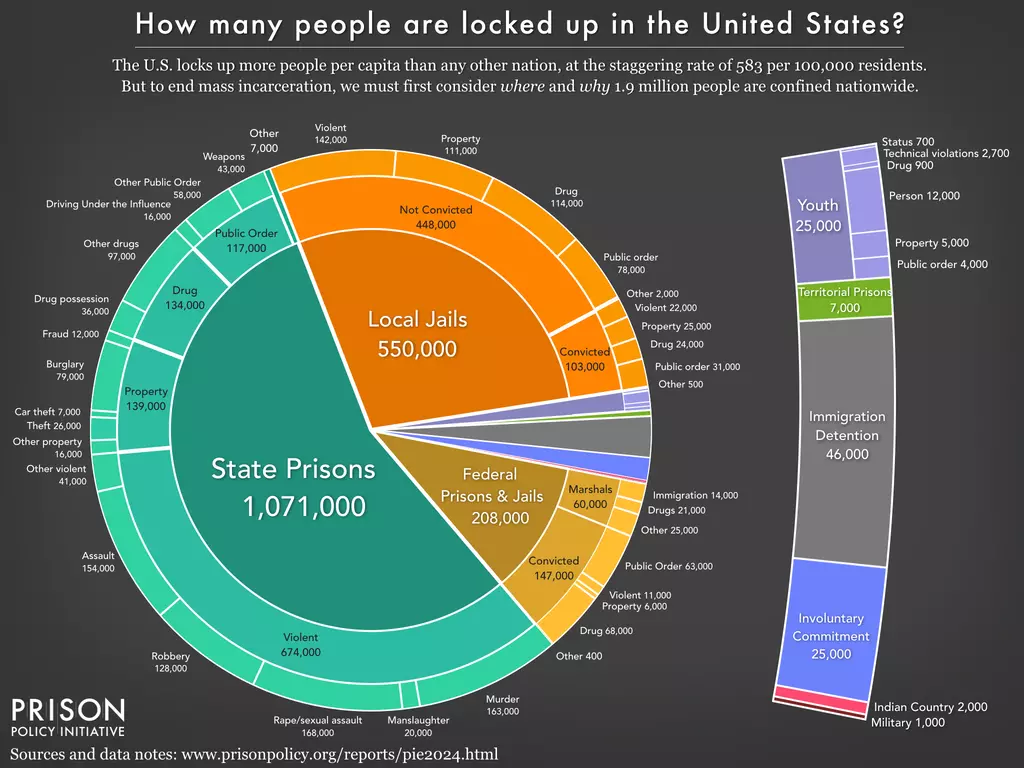A new analysis reveals troubling realities about youth confinement in the United States. While the overall number of young people in confinement has gone down in recent years, racial disparities are actually worsening. This contradiction underscores the urgent need to confront systemic inequalities, rethink juvenile justice policies, and push back against harmful legislation that seeks to criminalize children at even younger ages.
The findings come from the newly released report Youth Confinement: The Whole Pie 2025, published by the Prison Policy Initiative. The report sheds light not only on how many youth are confined, but also where they are held, under what conditions, and for what offenses. Taken together, the data paints a stark picture of a justice system that continues to fail its youngest members.
Racial Disparities in Youth Confinement
Despite a decline in total confinement numbers, young people of color—especially Black and Indigenous youth—are still confined at disproportionately high rates compared to their white peers. These disparities have deep roots in policing practices, sentencing policies, and social inequities that target communities of color.
Instead of serving as a rehabilitative system, youth confinement often perpetuates cycles of trauma and instability. Young people who encounter the justice system are more likely to face educational setbacks, mental health struggles, and long-term challenges reintegrating into society. When the system itself shows clear racial biases, those harms are magnified, leaving entire communities vulnerable.
Conditions and Realities of Confinement
The report also highlights where youth are confined and the conditions they face. Many are held in juvenile detention centers designed to be temporary but end up housing children for extended periods. Others are placed in residential treatment facilities, group homes, or correctional institutions that look and feel indistinguishable from adult prisons.
The offenses leading to confinement are often non-violent and could be better addressed through community-based alternatives. Yet, the system leans heavily on incarceration, even when research proves that supportive interventions—like mentorship, therapy, and restorative justice programs—are far more effective in guiding youth toward positive outcomes.
Troubling New Legislation: Lowering the Age of Adult Prosecution
At the same time these disparities are being exposed, legislation is moving in the wrong direction. In the District of Columbia, House Resolution 5140 proposes to lower the age at which a minor can be tried as an adult for certain criminal offenses to just 14 years old.
If passed, this measure would open the door to prosecuting children barely into their teenage years as adults, placing them in a system not designed for rehabilitation but for punishment. Such policies ignore decades of research on adolescent brain development, which consistently shows that teenagers are not fully capable of adult decision-making and impulse control.
Criminalizing children instead of supporting them through education, family services, and mental health resources only deepens systemic failures. It sets vulnerable youth on a path toward lifelong entanglement with the justice system rather than offering them a chance at growth and recovery.
The Role of Private Prisons and Profiteering
These issues cannot be separated from the broader conversation about the for-profit prison industry. Youth confinement is part of a larger system that too often prioritizes profit over rehabilitation. Facilities run or influenced by private prison interests benefit when more beds are filled—whether those beds hold adults or children.
The push to expand the reach of incarceration, even to younger populations, aligns with this dangerous model. For an in-depth look at how the private prison system fuels mass incarceration, see our resource on Private Prisons.
Building a More Just Future
If we are serious about protecting children, reducing systemic inequality, and creating safer communities, then the United States must:
- End racial disparities in youth confinement by reforming policing, sentencing, and detention practices.
- Reject harmful legislation like HR 5140 that seeks to prosecute children as adults.
- Invest in alternatives to incarceration such as restorative justice programs, mentorship, education, and trauma-informed care.
- Dismantle profit-driven models of confinement that prioritize incarceration over rehabilitation.
The decline in overall youth confinement numbers should be a sign of progress, but worsening racial disparities and regressive legislation show that justice is far from achieved. Protecting young people means challenging these systemic injustices head-on—and refusing to accept policies that treat children as criminals instead of as members of our communities with the potential to thrive.



